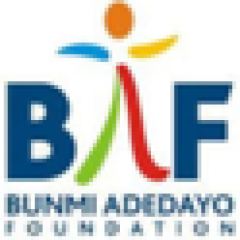SEP-M 2.0 Subject Enhancement Programme In Mathematics
About This Course
In 2021 SEP-M equipped math teachers and school heads from 272 low-middle cost schools with practical skills and universal best standard practices that aid interactive and successful lesson preparation and delivery and have impacted 8600 students as at of March 2022. SEP-M 2.0 aims to equips math teachers from 500 public and low cost schools with practical skills and global best standard practices that aid interactive and successful lesson preparation and delivery. The curriculum design for this project is research and need-based and directly addresses the identified problems among the benefiting schools, teachers, and pupils.
Key Focus Areas of the SEP-M intervention will now include Philosophy and Psychology of Math, Pedagogy of Math, Understanding and Correcting Myths in Math, 21st century models for Math lesson preparation, and delivery, Sustainable Methods for Resourcing and Deploying Instructional Tools for Math lessons among many others This project is innovative, scalable and have direct impact on classroom teachers and the thousands of pupils that pass through each of the schools involved. Passing through this programme will significantly impact on the quality of Math lesson delivery, eliminate misconceptions that Math is difficult among pupils and consequently improve the pupils’ interest and performance in Mathematics from the primary school
Requirements
- There are no software or materials needed
- You'll be equipped with confidence and skills during this course, so simply need a willingness to learn
Target Audience
- All Educators and Researchers
Curriculum
Module 1: Rejuvenating Maths Teachers
Unit 1: Learning Theories And Psychology of Teaching And Learning Math14:26
Unit 3: Case Study -> Application of Learning Theories Background3:18
Unit 2: Learning Theories And Pschology of teaching math14:16
Module 2: Maths Curriculum Content and Proficiency Strands
Module 3: Adopting Suitable Blended Learning Models
Module 4: Digital Ecosystem: Tools and Platforms
Module 5 : Learning Content Collation and Digitizations
Module 6: Strategies and Tools for Effective Math Lessons
Module 7: Lesson Planning: Building Blocks
Module 8: Learning Designer and Management System
Module 9: Hands On Lesson Planning
Module 10: Deploying Learning Packs Using One note
Your Instructors
Student Feedback
Reviews (19)
I really want to appreciate the organizer's of this program.
This program have really changed my sense of reasoning on effective teaching and the proper strategies to carry out my the teaching to involve 24 century skills.
Yes the course was a good match for me. of particular interest is using games to draw the interest of the pupils on the topic about to be taught. Thank you BAF for this updated training.
I have learnt a lot in a very short while. I am totally equipped to give my pupils the best using all sort of strategies and technological tools available for me. I have learnt that being innovative and creative is possible with Mathematics and that the teacher's attitude and approach to teaching can determine whether students love Mathematics or not.
The learning was interesting but the only challenge is network problem most times,but the experience was superb,the organizers really tried I have learnt a lot on how to enhance my teaching especially in mathematics.if those in the rural areas will be given this opportunity,then every learner will love mathematics.
I love these courses nPlease make it clear on the number of times one needs to enroll on each course nEach time I long is the same course that I have completed that I will be asked to get enrolled
I have learnt how to use the game method to enhance my teaching. Knowing that children see it as fun while learning also takes place during this process.
This training is an eye opener and it makes the use of lots of Google apps easier for us as teachers to impart effectively and efficiently to students and with lots of fun






